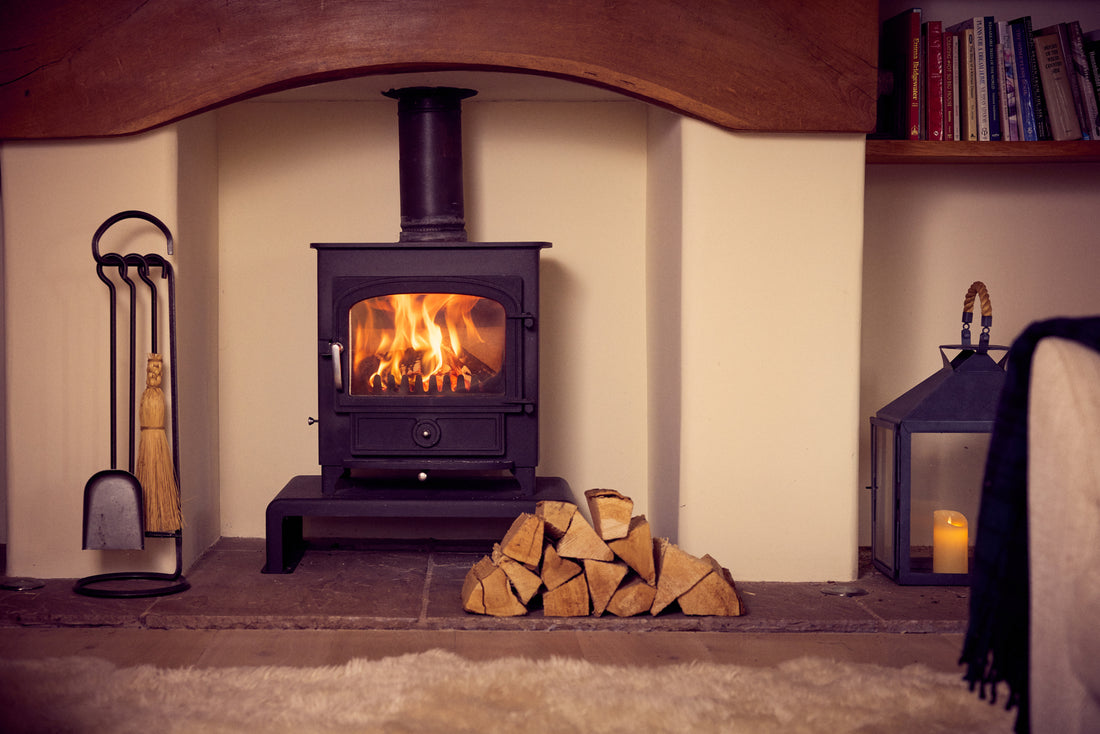
The London Wood Burning Projects Latest Campaign
Share
Whilst the industry is doing a huge amount to further reduce particulate emissions and working closely with Defra, it is always frustrating when you see negative campaigns, or media articles written by people that clearly have their own agenda – to demonize or even ban wood burning.

Part of me thinks that I shouldn’t draw attention to the London Project campaign being run on posters across the London Boroughs of Camden and Islington as it will only help them spread the word, but we either say nothing and let it ‘blow over’ as it will, or we endeavor to put the record straight and provide people with a more balanced approach and allow people to make a more informed choice about wood burning, rather than using extremely provocative images like this one that are designed to shock.

[Reference: London Woodburning Project Creative Campaign]
What is wrong with the London Wood Burning Projects Latest Campaign?
1. Campaign message: Domestic wood burning, linked to increased risk of asthma and lung cancer – Wood burners. Careless, not cosy
I am sure there is little doubt that exposure to particulate matter increases risks, but there are so many different sources of particulate matter and this suggests that ‘domestic wood burning’ is the main culprit. – It’s not!
The use of the generic term of “domestic wood burning” fails to distinguish the massive differential between modern Ecodesign stoves, older stoves and most importantly open fires. This is crucial information when it is known that there are still a large number of open fires used in London and these will emit 90% more particulate matter than a modern Ecodesign stove. In fact, a statistic (verified by Tom Parkes during a Mums for Lungs webinar in March ‘22) was that 70% of wood used domestically in London is burnt on an open fire. This of course is not only the most polluting and least efficient way to burn wood fuel for domestic heating, but is also an offence within Smoke Control Zones. Surely tackling the issue of open fires in London should be the first priority?
2. Campaign message: Wood burners – London’s 2nd biggest cause of air pollution.
The government’s annual air quality statistics provide a clear and detailed breakdown of all sources of particulate matter (PM) and its interesting to see how over the last 20 years, figures have dropped quite significantly. If you really want to get into the detail, the following statistics are derived from the National Atmospheric Emissions Inventory’s data tables, (click on the small + symbol by 1A Fuel Combustion Activities and read across the 7th line down – Domestic Closed stove – Ecodesign). The data shows that national PM2.5 emissions from Ecodesign compliant stoves using dry wood fuel equaled 0.0767 kilo tonnes in 2021; which equates to 0.09% of total PM2.5 emissions from all sources (83.21 kilo tonnes). The term “wood burners” in this campaign also does not distinguish between the different appliances and fuels used for domestic burning.
3. Funding for the campaign
This campaign is run by the London Wood Burning Project covering most of the London Boroughs, and I am sure you will share my amazement and shock that it is funded by the Defra Air Quality Grant Scheme. How can campaigns like these be run, without it would seem, any control by Defra as to the content or approach?
And, the irony is that the campaign posters are being shown in the underground stations, on busy streets and on London buses of which many are still diesel or hybrid – All of the poster locations in themselves will have a far greater rate of PM2.5 emissions than any Ecodesign stove, with the London Underground stated as having on average four times worse PM2.5 emissions than on busy roads above ground!
How much PM 2.5 emissions do Ecodesign stoves give in comparison to other sources?

Is the recent London campaign against wood burning a fair reflection?
Absolutely not a fair representation of the true facts and in my mind is pure scaremongering.
When I tell people what I do, there are still those that will have read media articles about wood burning and ask me if they are going to be banned, so its very easy to get sucked into what you read in the papers. However, when you dig deeper into the real facts you begin to realise there is just so much mis-information on the topic. Surely, we need to be realistic and look at the bigger picture with a reality check in that everything carries a risk in life and it's all about managing risk and weighing up the pros and cons.
When I first saw this SIA graphic above, it really brought it home to me, that there is really nothing to worry about in terms of wood burning as long as you are using a modern Ecodesign stove, Ready to Burn approved firewood, and regularly maintained appliances and a chimney swept annually.
What are the benefits of modern wood burning stoves?
Once again, take a look at the bigger picture here. As a country we are looking to reduce CO2 emissions, reduce our dependence on fossil fuels, improve sustainability, provide better fuel security and improve mental health.
I would say, wood burning ticks all the boxes:
Reducing CO2 emissions – by burning wood rather than oil, coal or gas.
Reducing fossil fuels – by using wood to heat our homes
Improving fuel security – by being able to use locally sourced wood which is independent from national supply of oil and gas.
Improve sustainability – by using fuel which provides a renewable source of energy and one which absorbs CO2 during its lifetime.
Improving mental health – by sitting around a real fire, whether this be in your home or around a campfire, with friends and family.
What is the solution?
What would we like to see in terms of wood burning and its future?
We would like to see it embraced and be seen as part of the solution, and not perceived as part of the problem in terms of sustainable home heating.
- It is really important that the stove industry continues to drive efficiency of stoves over the coming years and this is already started with the clearSkies initiative which is a new certification scheme.
- More stove manufacturers need to sign up to the scheme.
- The Ready to Burn scheme needs to be extended to Wales and Scotland as soon as possible. Presently it is only law in England, whereby wood sold in volumes below 2m3 has to be dried to below 20% moisture content.
- Open fires in homes (I know this is a controversial one) really do need to be phased out over the next 5 years and replaced with efficient Ecodesign stoves. (I grew up in a house with a lovely open fire and it was just wonderful, but we changed from an open fire to a wood burner in our present house 20 years ago, and I would never go back to an open fire. I now get all the benefits of a fire, but without any negatives.
- Incentivize those with stoves over 10 years old to upgrade to a more modern and improved efficiency Ecodesign stove. (I changed to an Ecodesign stove (Charnwood Aire) about 3 years ago and in the farm bungalow we upgraded to a Stovax Futura 5 and we were amazed how much more efficient they are and how much less fuel they use)
Nic Snell – 19th Dec 2023
